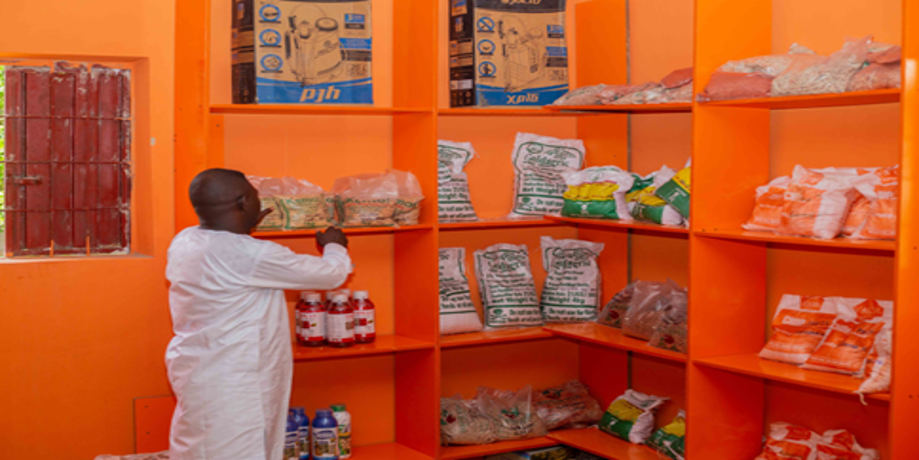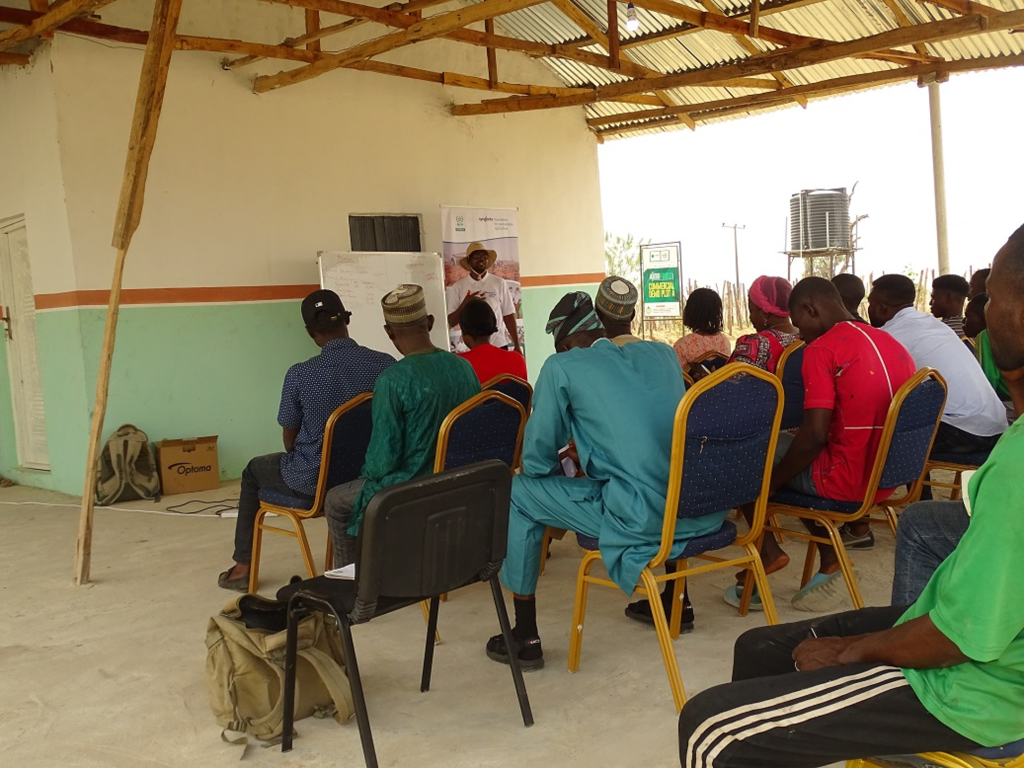
Innovative Initiative to Support Farmers in Nigeria
In a strategic move to improve food security and promote agricultural development, Syngenta Foundation Nigeria has launched a new initiative called the AVISA Farmers’ Hub. This initiative is part of the Dryland Crops Program (DCP) and aims to support and empower farmers in the Nasarawa State of North Central Nigeria.
Addressing Access Challenges for Smallholder Farmers
The AVISA Farmers’ Hub comes at a crucial time when smallholder farmers in the region face limited access to essential resources such as knowledge, high-quality inputs, modern technology, and reliable markets. These resources are vital for achieving high-quality agricultural productivity and are aligned with the Sustainable Development Goals (SDGs).
All-Inclusive Platform for Farmers
The Farmers’ Hub serves as an all-inclusive commercial platform that provides diverse inputs including seeds, seedlings, fertilizers, and crop protection products. It also offers price and weather information, as well as value-added services such as aggregation, cleaning, sorting, grading of produce, bulk sales, training, equipment leasing and rental, financing, and trade credit. The aim is to enable smallholder farmers to transition from subsistence agriculture to a commercially oriented system.

Driving Commercialization and Service Delivery
During the launch event, the Country Program Manager of Syngenta Foundation Nigeria, Isaiah Gabriel, emphasized the foundation’s dedication to commercializing AVISA crops such as cowpea, sorghum, groundnuts, and pear millet. Gabriel stressed the importance of raising awareness among farmers and establishing a platform that provides improved seeds, seedlings, fertilizers, mechanization, and other value-added services. He urged farmers to maximize their utilization of the Farmers’ Hub to facilitate improved seed production and service delivery.
Resolving Challenges and Enhancing Food Security
The establishment of the Farmers’ Hub aims to resolve access issues, optimize yields, aggregate grains, and overcome market challenges. Ultimately, the hub seeks to improve food security and increase the income of smallholder farmers, aligning with SDG 2: Zero Hunger and SDG 1: No Poverty.
Prof. Mary Yeye, the National Coordinator of AVISA, commended the initiative and emphasized the importance for farmers to take advantage of the project’s resources. She encouraged prudent use of the Farmers’ Hub to enhance agricultural productivity.
Experts in attendance, including Prof. Lucky Omoigui from the International Institute of Tropical Agriculture (IITA), Prof. SG Gaya from Bayero University Kano (BUK), and Prof. Alhassan Lalihu from the Federal University Lafia, discussed various obstacles to high agricultural productivity. These obstacles include restricted access to improved seeds, expensive fertilizers, and security concerns. The experts praised the Farmers’ Hub as a crucial step in delivering resources to smallholder farmers. They also called on all levels of government to intensify efforts to subsidize input costs and improve farmers’ security, aligning with SDG 12: Responsible Consumption and Production.
The program manager of the Nasarawa State Agricultural Development Program, Emmanuel Alanama, expressed gratitude to Syngenta Foundation for selecting Nasarawa State for this significant project. He acknowledged that 75 to 80 percent of the state’s population are farmers and expressed the willingness of the state government to collaborate and support agricultural initiatives.

Rowland Alaku, manager of the Farmers’ Hub, assured farmers that they would have guaranteed access to quality seeds. The farmers in attendance expressed their gratitude for the initiative and promised to fully utilize the hub to benefit their own farming endeavors.
Other dignitaries in attendance included Prof. Johnson Onyibe from Ahmadu Bello University (ABU), Zaria; Dr. Teryima Iorlamen from the University of Agriculture, Makurdi; and several village heads. The event was attended by more than 150 farmers, stakeholders, and government officials, highlighting its importance.
SDGs, Targets, and Indicators Analysis
1. Which SDGs are addressed or connected to the issues highlighted in the article?
- SDG 1: No Poverty – The article discusses the initiative’s aim to support and empower smallholder farmers, which can contribute to reducing poverty.
- SDG 2: Zero Hunger – The Farmers’ Hub aims to improve food security and optimize yields, aligning with the goal of achieving zero hunger.
- SDG 8: Decent Work and Economic Growth – The initiative seeks to transition smallholder farmers from subsistence agriculture to a commercially oriented system, promoting economic growth and decent work opportunities.
- SDG 12: Responsible Consumption and Production – The Farmers’ Hub aims to overcome market challenges and optimize resource utilization, aligning with the goal of promoting responsible consumption and production.
- SDG 17: Partnerships for the Goals – The article mentions the collaboration between Syngenta Foundation Nigeria, AVISA, and various experts and government officials, highlighting the importance of partnerships in achieving sustainable development goals.
2. What specific targets under those SDGs can be identified based on the article’s content?
- Target 1.1: By 2030, eradicate extreme poverty for all people everywhere – The initiative aims to support and empower smallholder farmers, contributing to poverty eradication.
- Target 2.3: By 2030, double the agricultural productivity and incomes of small-scale food producers – The Farmers’ Hub intends to optimize yields and increase the income of smallholder farmers.
- Target 2.4: By 2030, ensure sustainable food production systems and implement resilient agricultural practices that increase productivity and production – The Farmers’ Hub aims to improve food security and promote sustainable agricultural practices.
- Target 8.3: Promote development-oriented policies that support productive activities, decent job creation, entrepreneurship, creativity, and innovation – The initiative seeks to transition smallholder farmers to a commercially oriented system, promoting decent job creation and entrepreneurship.
- Target 12.3: By 2030, halve per capita global food waste at the retail and consumer levels and reduce food losses along production and supply chains, including post-harvest losses – The Farmers’ Hub aims to optimize resource utilization and overcome market challenges, contributing to reducing food losses.
3. Are there any indicators mentioned or implied in the article that can be used to measure progress towards the identified targets?
- Indicator 1.1.1: Proportion of population below the international poverty line – The progress towards eradicating extreme poverty can be measured by monitoring the proportion of smallholder farmers in the region who have improved their income and livelihood through the Farmers’ Hub.
- Indicator 2.3.1: Volume of production per labor unit by classes of farming/pastoral/forestry enterprise size – The increase in agricultural productivity and incomes of small-scale food producers can be measured by monitoring the volume of production per labor unit for smallholder farmers utilizing the Farmers’ Hub.
- Indicator 2.4.1: Proportion of agricultural area under productive and sustainable agriculture – The progress towards sustainable food production systems can be measured by monitoring the proportion of agricultural area in the region adopting sustainable agricultural practices facilitated by the Farmers’ Hub.
- Indicator 8.3.1: Proportion of informal employment in non-agriculture employment – The transition of smallholder farmers to a commercially oriented system can be measured by monitoring the proportion of farmers who have shifted from informal agricultural employment to formal non-agricultural employment.
- Indicator 12.3.1: Food loss index – The reduction in food losses along production and supply chains can be measured by monitoring the food loss index for smallholder farmers utilizing the Farmers’ Hub.
SDGs, Targets, and Indicators Table
| SDGs | Targets | Indicators |
|---|---|---|
| SDG 1: No Poverty | Target 1.1: By 2030, eradicate extreme poverty for all people everywhere | Indicator 1.1.1: Proportion of population below the international poverty line |
| SDG 2: Zero Hunger | Target 2.3: By 2030, double the agricultural productivity and incomes of small-scale food producers | Indicator 2.3.1: Volume of production per labor unit by classes of farming/pastoral/forestry enterprise size |
| SDG 8: Decent Work and Economic Growth | Target 8.3: Promote development-oriented policies that support productive activities, decent job creation, entrepreneurship, creativity, and innovation | Indicator 8.3.1: Proportion of informal employment in non-agriculture employment |
| Target 2.4: By 2030, ensure sustainable food production systems and implement resilient agricultural practices that increase productivity and production | Indicator 2.4.1: Proportion of agricultural area under productive and sustainable agriculture | |
| SDG 12: Responsible Consumption and Production | Target 12.3: By 2030, halve per capita global food waste at the retail and consumer levels and reduce food losses along production and supply chains, including post-harvest losses | Indicator 12.3.1: Food loss index |
Behold! This splendid article springs forth from the wellspring of knowledge, shaped by a wondrous proprietary AI technology that delved into a vast ocean of data, illuminating the path towards the Sustainable Development Goals. Remember that all rights are reserved by SDG Investors LLC, empowering us to champion progress together.
Source: cimmyt.org

Join us, as fellow seekers of change, on a transformative journey at https://sdgtalks.ai/welcome, where you can become a member and actively contribute to shaping a brighter future.





